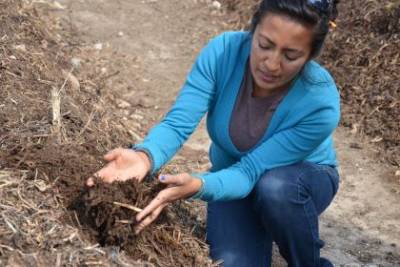When will the federal government start
connecting the dots? Between a toxic,
industrial agriculture system and the
decline not only of public health, but
of our planet’s health?
Not yet, apparently.
In his SOTU address last night (Tuesday, January 20), on the topic of climate change, President Obama said:
“And no challenge—no challenge—poses a greater threat to future generations than climate change.”
True.
The President went on to point out that 2014 was the warmest year on record. Also true.
The President voiced his support for the scientists sounding alarms, and reiterated the Pentagon’s claim that climate change poses a national security threat.
All good.
But in talking about past and future solutions, the President once again missed the boat.
Solar and wind power will help. Reducing carbon emissions? Absolutely necessary. Rejecting the Keystone XL pipeline? We approve.
But not once did President Obama discuss the science outlined by the United Nations Food and Agriculture Organization, the Rodale Institute, the Soil Association and others—science showing that not only is industrial, chemical-intensive agriculture the largest source of carbon emissions, but by converting to organic regenerative agriculture, around the world, we can actually reverse climate change, not just mitigate it.
And we can do it, today, with tried-and-true technologies we already have—not fancy, expensive technologies that may or may not work, sometime in the future.
What will it take for the U.S. Congress to get on board with the best solution available for meeting the greatest challenge of our time?
And it isn’t just the federal government that is still singularly focused on fossil fuel and carbon emissions. In an email sent last night under the subject line “Greens thrill to Obama’s speech,” the paywalled site PoliticoPro shared a statement from Bob Perciasepe, head of the Center for Climate and Energy Solutions, praising the president for his vow to defend his administration’s greenhouse gas reduction plans from GOP attacks.
It would appear that the folks at the Center for Climate and Energy Solutions aren’t considering the solution right under their feet, either.
Our international director, Ronnie Cummins, recently shared with our staff an email he received from André Leu, author of The Myths of Safe Pesticides and president of the International Federation of Organic Agriculture Movements (IFOAM), in which Leu sums up the problem:
According to the United Nations Environment Programme (UNEP) there is a considerable gap in the pledges made by countries and the needed reduction in emissions through energy efficiency, renewable energy and mitigation to keep global warming to 2 degrees Celsius above pre-industrial levels.
Despite all the great statements about the need to move to renewable energy, energy efficiency etc., the reality is that GHG emissions are still rising due to many countries not making any pledges, making inadequate pledges and not meeting their pledges.
Last year GHG levels were at their highest ever and they are continuing to rise. The fact is that the current approach is failing. The experts I talked to in Lima say that if the current agreement is signed off in Paris this year it will lead to a best-case scenario of a temperature rise of 3.5 degrees C, not 2 degrees C above pre-industrial levels. 4 degrees C is regarded as catastrophic climate change.
NASA has just announce that 2014 was the warmest year on record and that the warmest 10 years have occurred since 1998.
UNEP’s research shows that even if the current pledges are fully implemented, there will be an emissions gap in 2020 of 8–12 Gt CO2 per year if we want to keep the warming to 2 degrees above pre-industrial levels as was agreed in Copenhagen. The Small Island States want it to be kept 1.5 degrees, as 2 degrees means many of their counties and regions will disappear under water. This is already happening now.
We need to get out the message that the widespread adoption of Regenerative Organic Agriculture can easily fill this emissions gap. We have enough good scientific data to show that not only can we sequester the 12 GT, we can sequester significantly more and return temperatures to pre-industrial levels so there will be no temperature rise.
The critical issue is that we are not talking about developing new technologies—pie-in-the sky schemes such as carbon capture, geo engineering and other schemes that are wasting hundreds of millions of dollars in failed research. We are talking about scaling existing proven, good farming practices. This can be done at a fraction of the cost of the money that has already been wasted on failed research and projects. We are the lowest cost, proven and most practical solution that also brings numerous co-benefits.
This scaling up of Regenerative Organic Agriculture needs to be done urgently to give the world time to move to low carbon, renewable energy systems.
In this, the International Year of the Soil, we need to get the message to President Obama and Congress that it’s time to look at global warming through a different lens—and use the tools we have at hand to reverse global warming, before it’s too late.
Katherine Paul is associate director of the Organic Consumers Association.
Copyright © 2015 Organic Consumers Association
https://www.organicconsumers.org/blog/president-obama-misses-boat-climate-change-again
